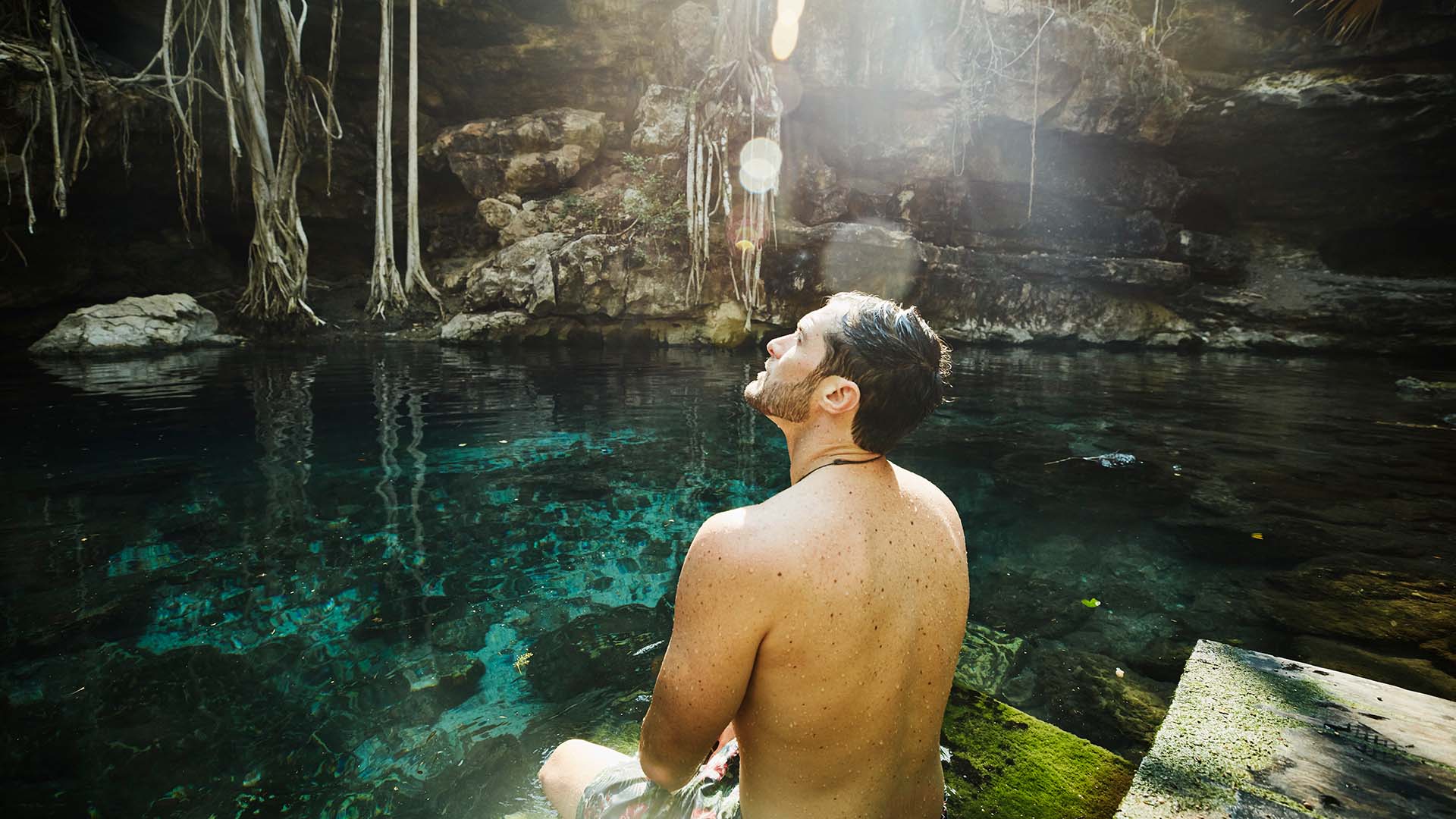As we pedaled out of Valladolid, Mexico, with the sun just starting to sizzle, tour guide Leonardo Perez informed my group of the magic yet to come — that during our five-hour bike excursion, we’d encounter watering holes, welcoming people and … wizards. The first two made sense. After all, Mexico has always been a friendly place for me, and our tour’s destination was an off-the-radar cenote, one of the underground pools that dot the landscape around Yucatan in southern Mexico. But wizards? I pedaled on.
Eight of my friends and I were on a bike tour in Valladolid, a town of 50,000 people in the Yucatan region of Mexico, a two hour drive from Cancun. Leo, our tour guide, is also the owner of the company, Maya Tours Natural Experience, truly a one-family operation: Leo leads the tours, and his family, mostly his mother, cooks up a homemade lunch of tacos for hungry tourgoers to devour in the family’s backyard.

The day began with coffee at Leo’s home near the center of Valladolid, a colorful 16th-century town about two hours inland from the high-rise beach hotels, all-inclusive resorts, and raucous bars and restaurants of Cancun and the Riviera Maya.
Soon enough, we were on our bikes, destined for magic. “Bomba,” Leo bellowed out from his bicycle in front of our pack, pointing to some dog droppings on the street for us to avoid. Other times, he’d stop us so we could imbibe the beverage he’d given us at the beginning of our ride, a “Mayan energy drink” containing ground-up oats, nuts and dried fruits.
We rode over highway bridges, past new housing developments that would not have looked out of place in American suburbs, until eventually the pavement turned to gravel, and the landscape grew into a thick, verdant jungle.
After about 30 minutes, we rode through the village of Popolá, with its haunting, half-standing, neo-Gothic church smack in the center.
“This is the village of brujos,” said Leo, using the Spanish word for “wizards.” “If you have some ailment, you come here and ask anyone on the street for the nearest brujo, and you can go there, and he’ll make up a concoction using ancient Maya recipes and ingredients.”
I didn’t have any physical ailments at the moment, but I was tempted to get off the bike and ask around for a brujo, curious to see if he would be wearing a pointy hat and a robelike garment emblazoned with stars and crescent moons.

We soon left the wizards of Popolá behind and returned to cycle the jungle trail again. As I rode alongside Leo, he filled me in on his background. About 10 years earlier, he’d befriended a couple of tourists, a woman from the United States and a man from Spain, and taken them on a bike tour around Valladolid and to his favorite cenote.
“At the end of the day, they told me that the tour I gave them was the best experience they’d had on their trip through Mexico,” he said. “And they even suggested I start a tour company.”
He didn’t initially take their advice. It was only after he’d given a few more impromptu tours — and the same advice kept popping up — that the idea took hold. A couple of years after that, he officially founded his tour company.
Maya Tours Natural Experience is not merely a small company. It’s a model for the future of sustainable travel. Visitors travel by bicycle — no gasoline needed. We pay Leo directly in cash — no middlemen, or even banks, needed. He buys local ingredients from local vendors so his mom can cook lunch for the tourgoers. He pays the farmer who owns the land where the cenote is to let us onto the grounds.
It’s a small local business that keeps the money local, spreads the money to other locals, and gives tourists a real look at life in this charming Mexican town while using alternative transportation that leaves no carbon footprint. Everyone wins.
“Just for the simple fact of having a good time and meeting new people — and that those same people can know about my town, my culture, my people — fills me with joy,” Leo told me. “My hope is that I can share my roots with people, and they can experience the real Yucatan jungle and see the place as if they were born in these Mayan lands.”

About 15 miles into our ride, Leo halted us on the trail. We got off our bikes and walked around an unassuming, unmarked gate and down another trail. After about 500 feet, we came upon a massive hole in the earth, about half an acre in size and at least 100 feet deep. The area became still, with a few birds chirping in the distance, as we approached. Leo waved his arm at it, like a model at a boat show revealing the latest edition of a vessel. “Here it is.”
A lot of cenotes in Yucatan have been commercialized, where visitors pay a fee to enter, grab a towel and then walk down a comfortable stairway to the water. This was not one of those. This was a true wild cenote in the middle of the jungle. And it felt like we were about to plunge into another dimension.

After a steep climb down a metal ladder, I plunged in where beams of sunshine bounced off the pristine water and illuminated the inside cave walls with a deep blue glow. The water was cold at first, but it was so refreshing it felt like jumping into a bottle of ultracarbonated water.
Four-inch fish, gliding beneath my paddling feet, seemed unfazed by our presence. And about 100 feet above, where the sunshine beamed through the hole in the earth, felt like a world we had long left behind, and one that I was not ready to return to so quickly. It was truly magical.




